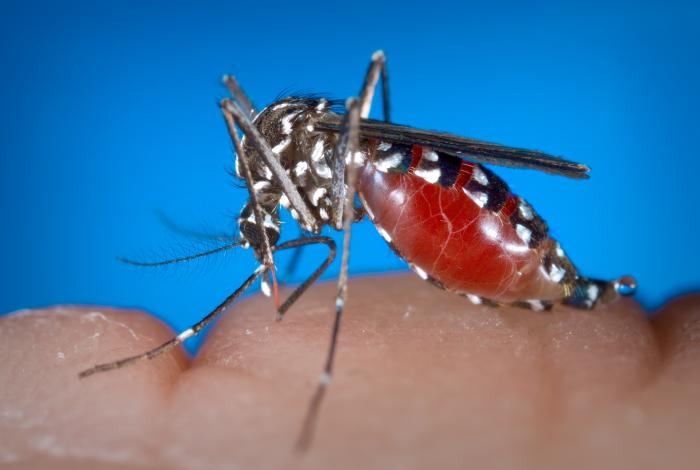What is a “handful”?

Everyone is getting all caught-up in the fever over Zika in the Americas. So I was pleasantly surprised to see an article in a blog I frequent titled: Your Non-Alarmist Guide to the Zika Virus. Unfortunately, it only took one sentence for the whole post to be derailed for me:
“Zika virus, a previously obscure disease that had only caused a handful of cases in Africa and some island nations, is now a major global health concern.”
I thought to myself, “Only a handful?”
Now, I’m not a native English speaker, so there are those times when a phrase or colloquialism evades me. The word “handful” represents “very few” to me, like, five or less. I’d even go with ten or less if you push me. When I look up the word “handful,” I get definitions like “a quantity that fills the hand.” That, to me, is a handful.
From everything I’ve been reading about Zika, there have been thousands of cases of it in Africa and the South Pacific before it hit Brazil last year. Thousands, to me, are not a handful. That’s more like a motherlode or even a shipload. It’s a lot, and not a handful.
Maybe I’m caught up in the word for no reason, and maybe the real message to be learned from the article is that we all need to chill out over Zika and not make asses of ourselves like we did with Ebola. There shouldn’t be a rush to quarantine people willy-nilly because they are coming back from a place in the world that scares us. And we should let the science (especially the epidemiology) guide the response.
But we humans understand risk based on numbers. If you tell me that there are 20 cases of measles in the United States right now, I probably wouldn’t worry because I know that you know that I know that you know that measles is on the rise. Twenty cases, while an embarrassment for the most powerful nation in the world with wide access to vaccines, is not a big deal. On the other hand, if you tell me that all twenty are in my community, then the game changes a little bit. It changes even more if those 20 occurred in the last week. Time and space, you see, make numbers look different… A sort of epidemiological relativity.
So when the author of the post writes right off the bat that there have only been a handful of cases “over there,” the reader may reasonably assume that Zika has not been a big deal to humanity, and that maybe it won’t be this time around either. However, if you look at the field reports and published papers from the outbreaks “over there,” you come to find out that the outbreaks occurred explosively, involved thousands of cases, and were hard to bring under control. Add to that the fact that the microcephaly association may have been missed because of inappropriate surveillance “over there,” and the problem becomes a little bit clearer and a little bit scarier.
I don’t think that it was the author’s intent to undermine the number of cases or the impact of Zika to those countries “over there”. However, I do wish that she would have quantified them a little bit better than just writing “a handful.” A simple literature search for Zika reveals that there were about 20,000 cases in French Polynesia in 2013 during their outbreak. Before that, about 75% of the inhabitants of Yap Island (population ~7,000) came down with it in their outbreak. Going back even further, you see field reports from Africa in which hundreds or thousands of cases are noted in different outbreaks.
Unfortunately, I see the same mistake from other writers trying to convey the magnitude of what is happening in the Americas. Likewise, the people who are easy to panic are making it out to be like everyone and their sister is getting Zika in “those countries.” All this when the answer is somewhere in the middle and the truth is busy trying to catch up to rumors and speculation.
Well, it most certainly counts as a few to someone with thirty thousand fingers.
Or, if 12000 were sickened in mainland China.
While usually, “a few” is a figurative handful, it can also be casually used when a small part of the populace, well under 1% are ill. One never hears that in public health, as in public health, it’s well known that a few can become many in a New York minute.
A New York minute being a unit of time below Plank Time measure. 😉
LikeLike